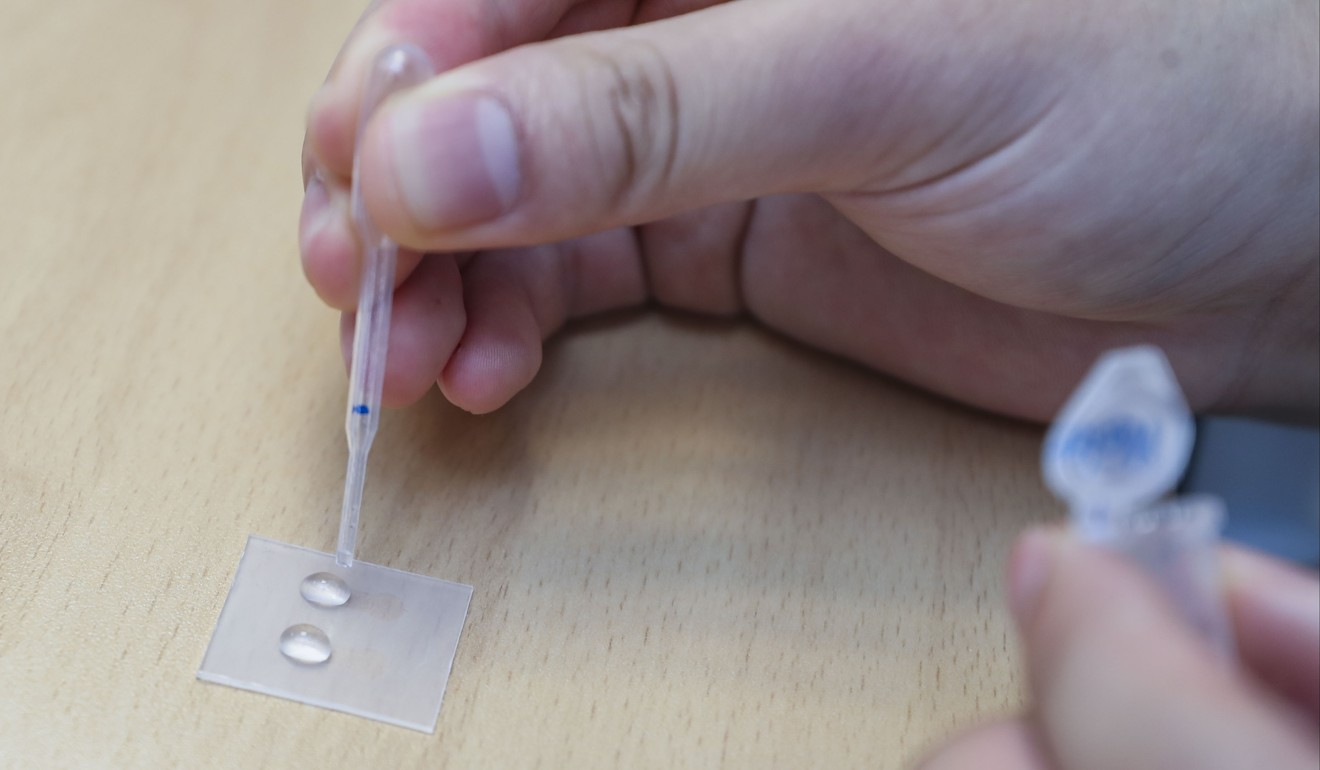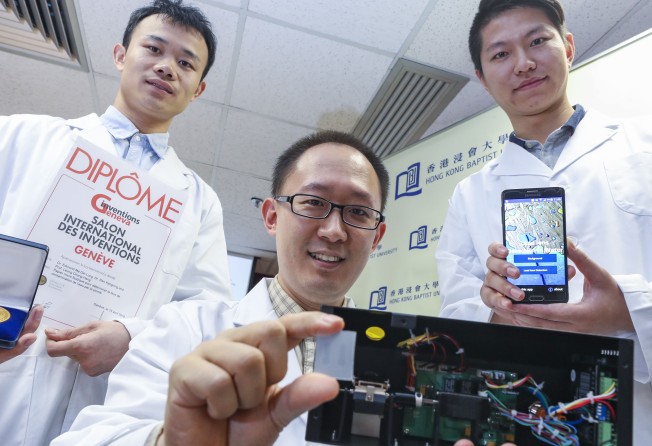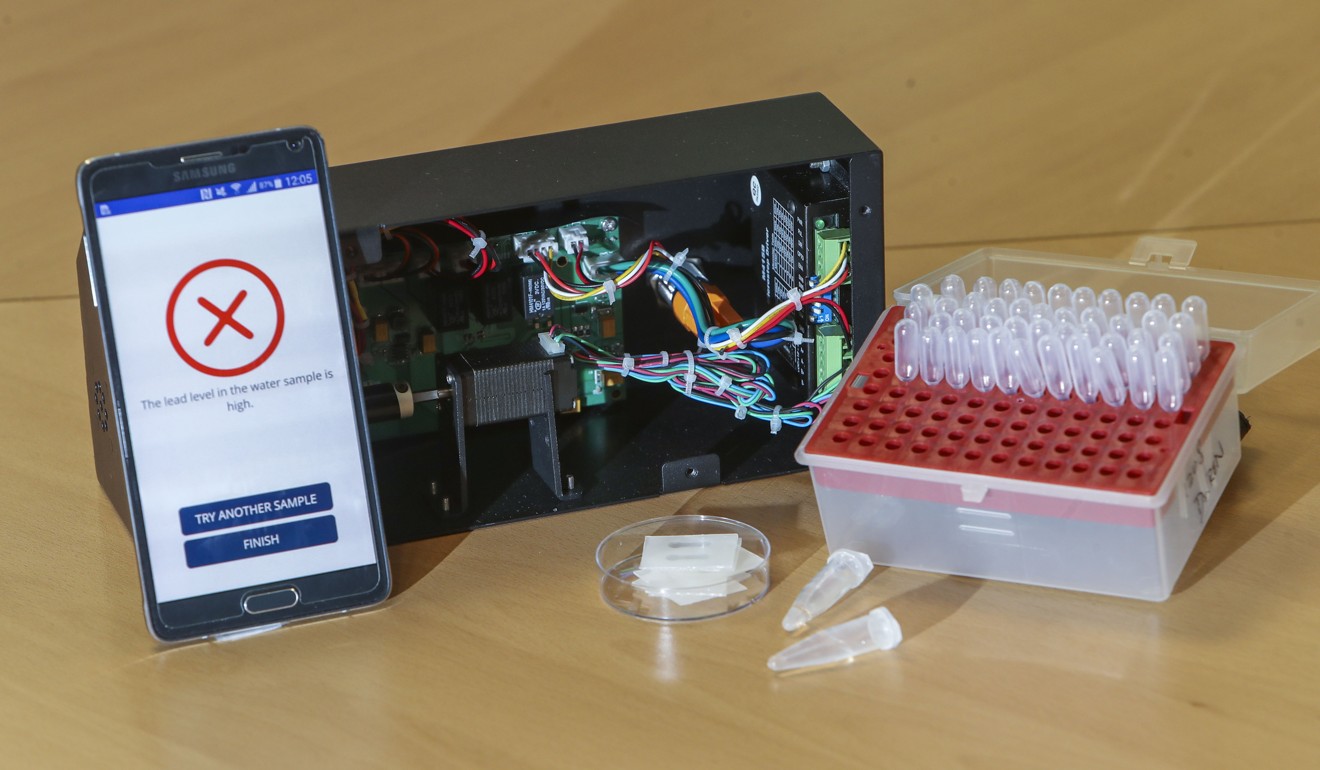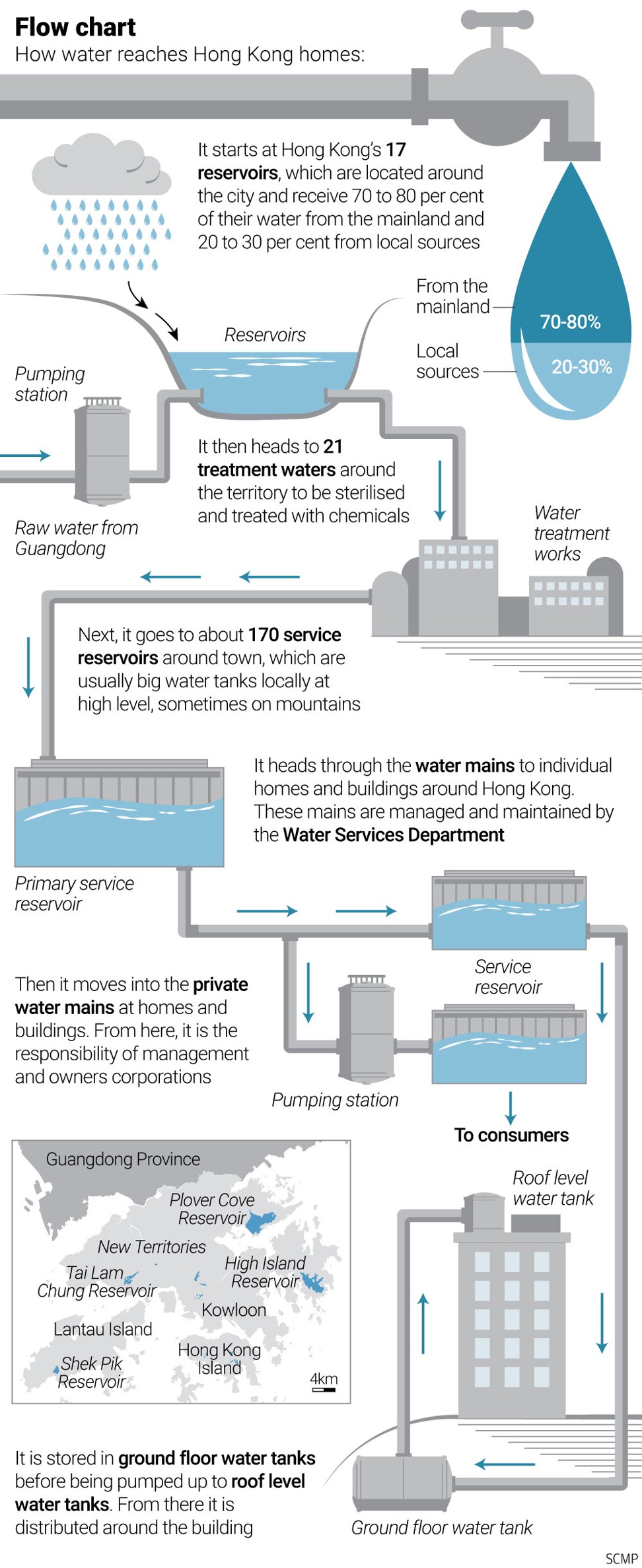
Hong Kong Baptist University scientists herald breakthrough device to test lead in water
Award-winning invention allows residents to detect even amounts well below the World Health Organisation’s guidelines for heavy metals in drinking water, and reduces wait for results from days to minutes

Hong Kong scientists have invented a portable device that can detect even small amounts of lead in water in just 10 minutes, and want to see it used across the city, recently hit by a series of drinking water scares.
The research team from Baptist University said on Tuesday the device could detect 2 micrograms of lead per litre of water, even though the World Health Organisation and the Hong Kong government say up to 10mcg/l is acceptable. The limit is 50mcg/l on mainland China.
One of the scientists, Dr Ren Kangning, said the award-winning device made testing faster and more affordable and he was keen to work with the Water Supplies Department to carry out tests.
“The reason we started this project is that the conventional testing method involves expensive laboratory procedures with large equipment and takes days to get results,” the associate professor at the university’s chemistry department said.

In December, residents at a Shau Kei Wan public housing estate complained of foul-smelling water and skin ailments. Official tests showed the water had impurities, including lead and iron, but was safe to drink.
This came after a scare in 2015 when water samples from 11 public housing estates, six kindergartens, 15 schools and two public hospitals were found to contain excessive lead. More than 160 people were found to have heightened levels of lead in their blood.
A commission led by a High Court judge in May last year blamed the exposure in 2015 on leaded solder in the pipes – despite a requirement that the Housing Authority, Water Supplies Department, their contractors and licensed plumbers use lead-free solder in freshwater pipes.
As a result, the government launched a citywide action plan in September to enhance monitoring of drinking water quality in all buildings, including private and public flats, by drawing 670 samples from taps across Hong Kong annually to test for six metals – lead, nickel, chromium, cadmium, copper and antimony.
According to the WHO, long-term exposure to lead can cause kidney damage and high blood pressure in adults. Children are particularly vulnerable and may suffer from developmental delays due to excessive exposure.
Dr Ren said the team was in talks with biotech companies and manufacturers to take the device – which won the gold medal at the 46th International Exhibition of Inventions Geneva, in Switzerland, in last month – to market in about two years. It is likely to cost about HK$2,000 (US$255) to buy the device.
The invention has been granted a Hong Kong patent and the team has applied for a US patent.

The device comprises a “reaction box” about the size of two 500ml bottles, test chips and a smartphone application. Users can place a drop of water on the chip and put it in the reaction box to start the test.
After about five minutes the device will beep to signal the results are ready. The last step is to take a photo through the lens built in the box, which allows the mobile app to detect whether the sample is safe for consumption.
The research team estimated it cost about HK$1 million to develop the device.
